Powered by Caffeine: W&M’s 24-Hour Global Innovation Challenge
By Shivani Gupta ’19
Executive Board Member of WMGIC
This year the William & Mary Global Innovation Challenge (WMGIC) drew in over 65 students from a number of different majors and skill areas. The challenge, which started off as a student pitched idea is now a formally recognized student organization, celebrating its third year on campus.
“WMGIC seeks to create a platform for students from diverse disciplines to collaboratively analyze and propose innovation solutions to globally important problems in the field of international development.”
In teams of 3-5, students participated in an overnight, hack-a-thon inspired challenge with a presented case. During this 24-hour period students receive mentorship from professors and professionals in the field of international development — from the State Department, Chemonics, to the U.S. Coast Guard.
This year’s case addressed a timely and multifaceted global challenge: climate change as a source of forced migration and displacement. Specifically, the case addressed climate refugees in Kirabati, a small island nation comprising of 32 low-lying coral atolls and one small island in the central Pacific Ocean.
The term “climate refugee” is a new addition to the literature. It underscores immediate human security challenges arising from accelerating climate change. Recent examples of forced migration due to climate change includes 2010 floods in Pakistan that displaced 11 million people and the 2013 Typhoon Haiyann in the Philippines that displaced 4 million people.
For the purposes of the case, students addressed three key challenges overlapping with the United Nations Sustainable Development Goals for 2023:
- damage of infrastructure
- disease incidence
- food insecurity
Students then approached these problems from three industry points including: Governance, social entrepreneurship, and data & technology.
When the 24-hours were up, 17 judges and mentors reviewed the student-team presentations. The presentations were praised for their high caliber degree, thoughtfulness, and innovation. Ms. Kerry McIntosh of the State Department noted that “All of the presentations I heard were so well put together, creative, and impressive overall!”
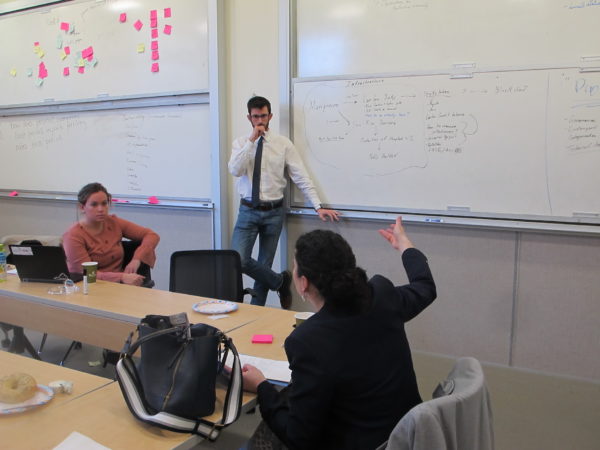
Student team ideating
The top three teams from the individual streams proposed a host of impressive solutions. These highlights include team Google Fast & Innovate’s proposal to implement oyster reef building to address infrastructure loss; Team Platypi’s proposal for Tarawa Acquatic Rehabilitation Program to address environmental restoration; and SWD Solutions’s proposal for sustainably made floating farms to address food insecurity.
The WMGIC competition serves as an opportunity for quick, creative, and collaborative design and innovation. Students truly go beyond the task to deliver impressive presentations. We’re excited for students to continue to take on new challenges in future competitions, and for them to keep designing a better future.

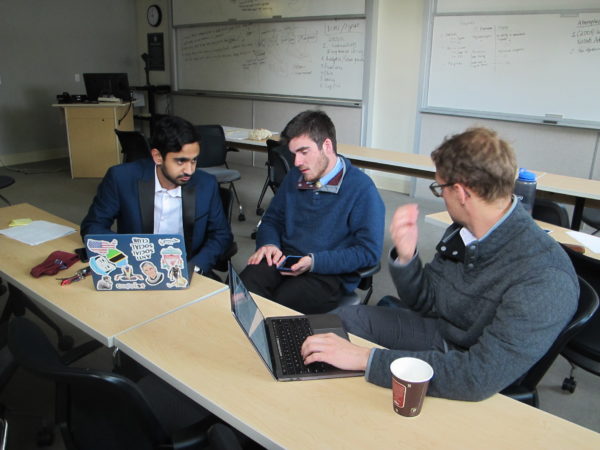
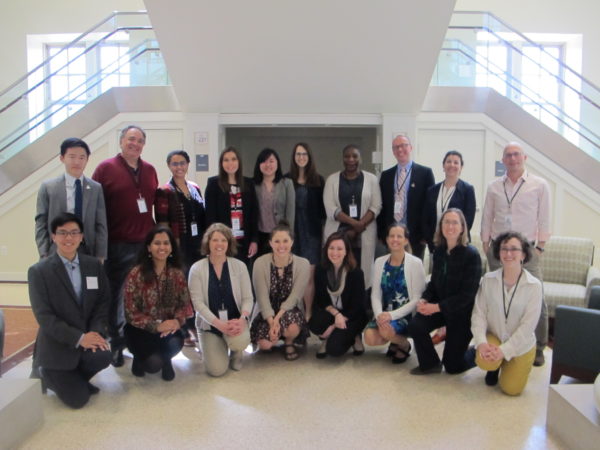
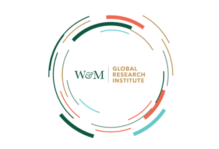
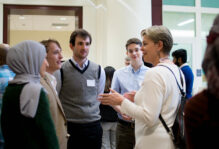
No comments.
Comments are currently closed. Comments are closed on all posts older than one year, and for those in our archive.